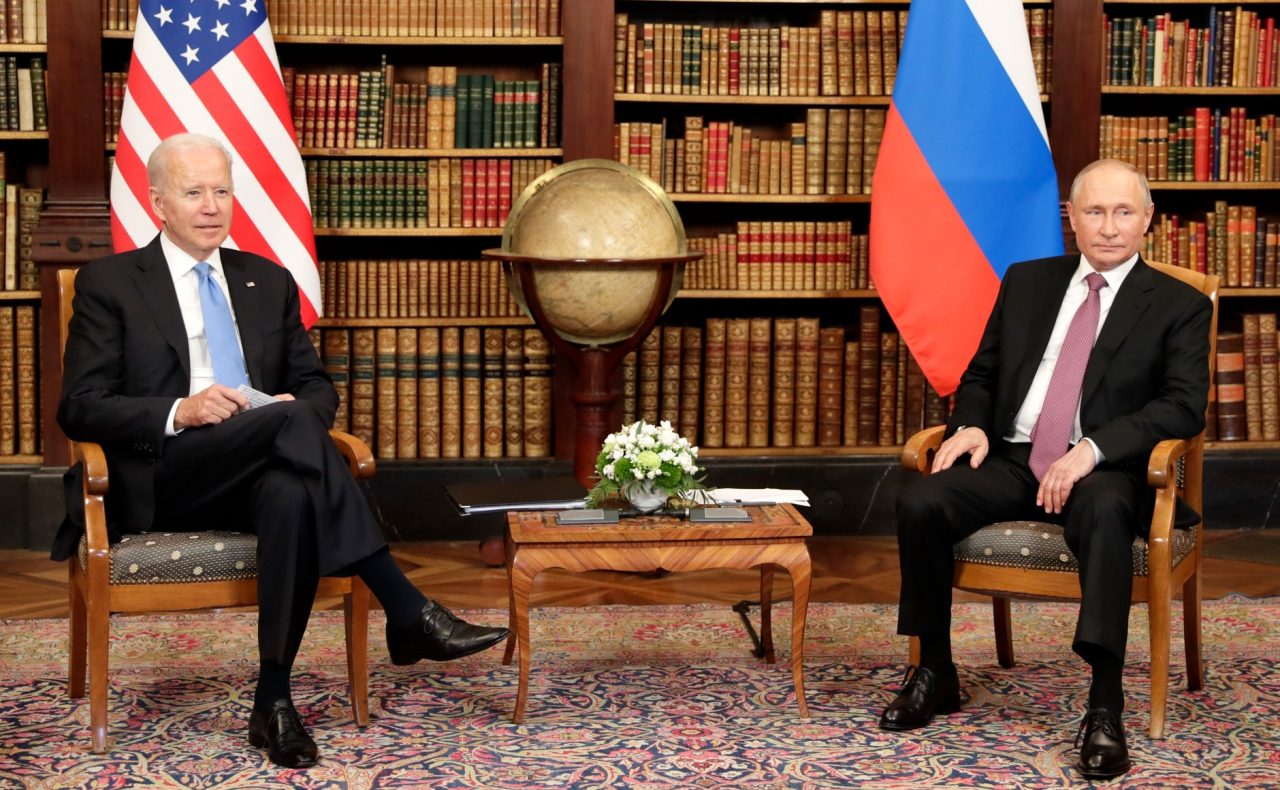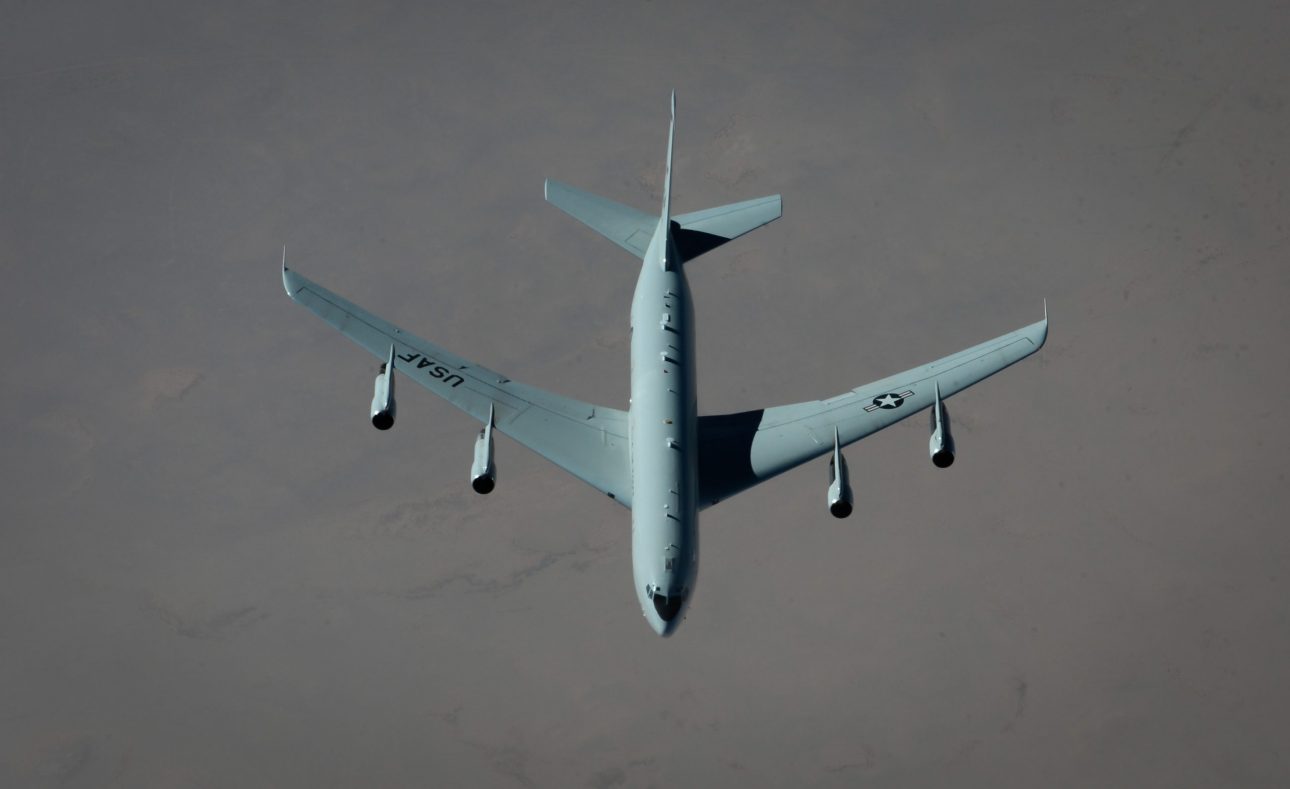With tensions escalating between Ukraine and Russia, the US is employing various means to checkmate Moscow. Washington has decided to send spy planes on sorties over Ukraine for reconnaissance missions.
In a fresh development, an American spy plane nearing its retirement flew over Ukraine.
The E-8C Joint Surveillance Target Attack Radar System was spotted in Eastern European skies on December 27, reported The Sun. The development assumes significance as satellite images have shown a massive Russian build-up along the border with Ukraine.
USAF and RAF assets heading to Eastern Europe on recon missions
REDEYE6 USAF E-8C JSTARS
RRR7216 RAF RC-135 Rivet Joint pic.twitter.com/whInkSlgiW— Uncle Sam (@UncleSamOSINT) December 28, 2021
The number of Russian troops that have recently been deployed closer to Ukraine has been estimated to be between 60,000 and 90,000 with one US intelligence dossier claiming that figure might be as high as 175,000, Reuters reported on December 27, the same day the JSTAR’s flight was spotted.
Though this is being touted as the first-ever flight of the E-8C JSTAR over Ukraine, there is no official confirmation on the same. Last month, Russia had claimed that the E-8C was seen circling above the Black Sea, about 35kms from its border.

The JSTARS, based at Ramstein Air Base in Germany, used the call sign REDEYE6 and flew multiple racetrack patterns over eastern Ukraine’s Donbas region, where Kyiv’s forces are still fighting Russian-backed rebels in a long-running conflict.
If Russia were to launch a large-scale invasion of Ukraine, it could do so largely through this disputed border region. The E-8C was joined on its Ukraine mission by a US Air Force RC-135V Rivet Joint reconnaissance aircraft, (call sign HOMER19) flying from Souda Bay on the Greek island of Crete.
According to publicly accessible flight-tracking data, which isn’t always accurate, the Rivet Joint was operating nearly 40 miles from territory seized by Russian-backed forces at times.
However, this is not the first flight of the Rivet Joint since fresh tensions broke out between the neighbors. A few days back, an RC-135W Rivet Joint was seen flying over the Donbas region of Ukraine.
The key regions of interest for the US intelligence-gathering aircraft would have been on the other side of the border in the Russia-controlled territory near Ukraine. However, in any case, these troops are part of a larger Russian military build-up in the region that includes heavy armored vehicles, artillery, and perhaps long-range missiles, as well as air defense systems.

Russia annexed Crimea in 2014 when the threat of Ukraine joining NATO loomed large. The fresh tensions have also been a result of the Ukrainian enthusiasm to join the anti-Russian grouping, a precedent that Russia considers a threat to its security.
Russia has a significant hold over the Donbass region with the support of separatists present there. This could be the potential area of concern for the NATO spy planes.
E-8C JSTARS Spy Aircraft
The JSTARS was a joint project of the US Air Force (USAF) and the Army that provides an airborne, stand-off range, surveillance and target acquisition radar as well as a command and control center.
The primary duty of the E-8C is to provide theater ground and air commanders with ground surveillance to support attack operations and targeting that contributes to the delay, disruption and destruction of enemy forces.

The E-8C uses a modified Boeing 707-300 series commercial airframe with radar, communications, operations, and control components required to carry out its missions. The canoe-shaped radome under the forward fuselage, which houses the 24-foot (7.3-meter) long side-looking phased array antenna, is the most visible external feature.
The E-8C’s radar and computer systems can collect and display extensive battlefield data on ground forces. These capabilities would be essential in tracking Russian soldiers near the Ukrainian border, gaining a better understanding of Moscow’s objectives and capabilities.
The US Air Force acknowledged its plans to sell four aircraft — a fifth of the JSTARS fleet — by September 2022, only days before REDEYE6 flew its Ukraine mission. The controversial retirement of the E-8C fleet, which has been a long-running topic of discussion, will begin with this move.
The Pentagon said the retirement of the first four JSTARS planes is part of a larger effort to “improve intelligence, surveillance, and reconnaissance (ISR) and command and control capacity in a highly contested environment” in its defense budget request for the fiscal year 2022.
Apart from the symbolic significance of these surveillance planes flying so near to Russia, the US has also been equipping Ukraine with weapons such as Javelin anti-tank missiles, a pair of refurbished former US Coast Guard patrol boats, and small arms.
Which Platform Would Replace JSTAR?
The US Air Force had earlier decided that JSTARS would be replaced by a system-of-systems-focused strategy based on the Advanced Battle Management System (ABMS).
ABMS began as a component of a JSTARS replacement that focused on ground and airborne target-tracking capabilities, but it has since evolved into a comprehensive digital battle network system that collects, processes, and shares data in real-time among American and allied forces.
The Advanced Battle Management System is an interconnected battle network that collects, processes, and shares relevant data to warfighters to make better decisions faster. To achieve all-domain superiority, activities in one domain must enhance the effectiveness of others. pic.twitter.com/oF76qroE7O
— U.S. Coast Guard (@USCG) September 29, 2020
It incorporates a variety of aircraft and satellites—all sorts of aircraft can now collect SAR and GMTI data. There is however a new clandestine class of aircraft that can infiltrate enemy airspace for data collection, besides the upcoming B-21 stealth bomber.
Traditional strategic reconnaissance assets capable of GMTI and SAR collecting, such as the U-2 and Block 40 Global Hawk, will remain in service but will not be able to penetrate hostile airspace.
The future of our military is being crafted right here at Robins AFB. Team JSTARS continues to serve globally, & as the transition to the Advanced Battle Management System & other missions begin, I’ll continue to advocate for our military & groundbreaking jobs in Middle Georgia. pic.twitter.com/kDdq9bi25o
— Senator Reverend Raphael Warnock (@SenatorWarnock) June 3, 2021
With a mature ABMS network still a long way off, US lawmakers used the 2022 defense policy bill to warn the Air Force that retiring JSTARS before a successor is deployed would result in the loss of important intelligence-gathering capabilities.
However, the same bill signed by President Joe Biden recently does not prevent the Air Force from retiring the E-8C, and the service is now working toward that goal. Until these spy planes are completely phased out, they are expected to gather critical intelligence for the United States as well as its partners.
- Contact the author at sakshi.tiwari9555@gmail.com
- Follow EurAsian Times on Google News




